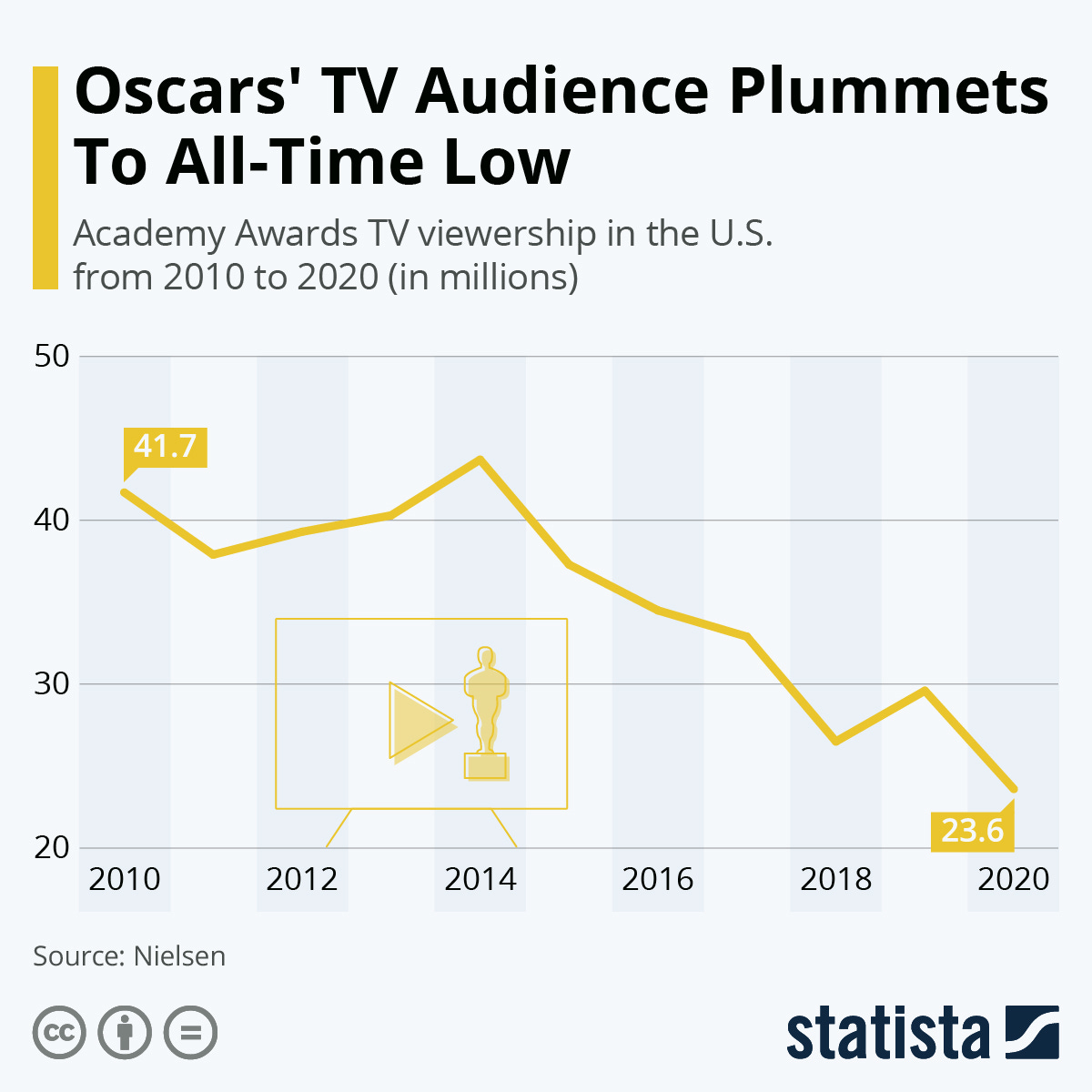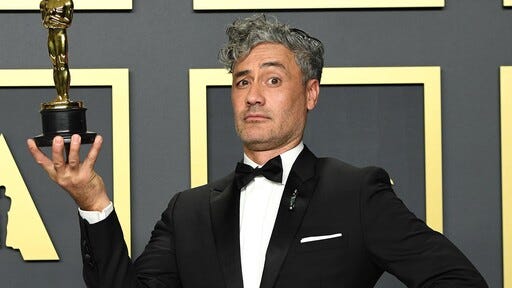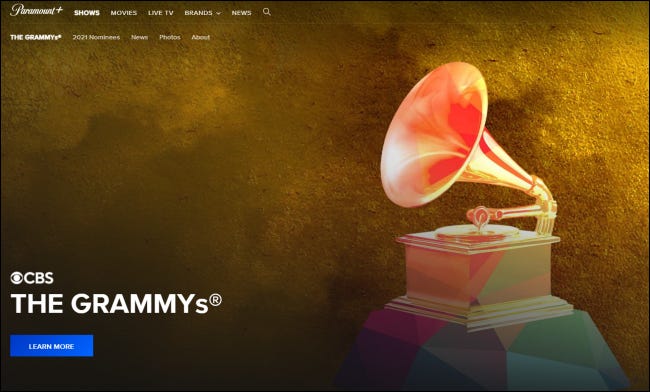The Oscars are nearly upon us and, aside from questions about whether or not the show can pull off being interesting and innovating, the bigger concern is how many people will tune in.
Award shows have long felt antiquated, fostered by an academy that seemingly doesn’t want to sacrifice perceived prestige in a search for new, younger viewers. As such, award shows are still mostly only carried on major networks, at one time, on one date. There aren’t many exceptions made.
Moving the Oscars to a Monday in normal times, for example, means losing out on a football lead in. The Golden Globes lost that benefit this year, dropping from 18.3 million viewers and a 4.7 rating among viewers between 18-39 to just under seven million viewers and a 1.5 rating among the same demographic. Ouch. The Emmy’s also lost that football lead in back in 2014 when the show was moved to August and held on a Monday.
While linear viewership is down, there is one little piece of information that’s crucial: streaming viewership is up and next-day searches on YouTube show interest in film’s biggest night is still relevant. Look at the Grammy’s. Although the show had its lowest ratings ever this year, viewership via streaming (Paramount+ in this case) was up 83% year over year. The Golden Globes, however, were only available via NBC’s app (not a great experience) or a virtual TV provider like YouTube TV and Hulu + Live TV. And they saw a massive dip.
It’s not that award shows like the Oscars, Globes, Emmys, and Grammys have to compete with other Sunday or Monday night programming; it’s trying to compete with often better programming on services that people are already glued to and are in many cases free. The Oscars biggest competition isn’t just whatever HBO show is airing at 9pm that Sunday; it’s TikTok and Twitch.
Attention is short. If people are going to commit three hours to watching something, there needs to be something in it for them. Simply being entertained used to suffice, but it hasn’t for some time. Not when YouTube breakdowns and recaps the next day are more entertaining and shorter; not when Twitch has become the go-to place to simultaneously watch a live event; not when the actual caliber of the award show has diminished and refused to grow with the audience it needs tomorrow, not just the one watching today.
Finding methods that aren’t infantile — “talk about movies more people watch” or “have younger actors/personalities at the actual show” — is key. Audiences don’t need Addison Rae showing up to present the award for Best Documentary Short in order to get people to tune in.
Lean into accessibility and reward. Or, to be more specific, lean into the hype market. These are four suggestions that award show bodies and TV networks could implement to boost viewership, boost additional digital revenue, and turn big Sunday events back into appointment TV.
Borrow a little from San Diego Comic-Con and the Game Awards
Make it easy to watch
Partner with YouTube to sell a one-time pass
Rework messaging without losing “prestige”
And the Oscar goes to...Hall H
A three hour telecast translates to people spending about 43-45 minutes watching commercials, according to research firm Kantar. NBC might run three or four This is Us ads as a reminder to watch the network’s biggest show while it has about 15 million people watching. Commercials aren’t exciting and, for a younger audience spending more time cord cutting and watching ad-free programming via Netflix or on the internet with Ad Block turned on, actively discouraging.
In 2017, a study found that 65% of people skipped online ads. That’s up 5% from the year before. In 2019, a different study found that people hated ads because they were too creepy, boring, or irrelevant. Until the CTV ad market really starts to pick up (for more on that, here’s what Roku is racing toward), and linear ads feel more targeted to each person watching, commercials are a major turn off.
What people do like, however, is hype. What people will sit through endless commercials for is hype. Go to Nintendo’s YouTube channel a few hours before a new Direct (a news event held by the company) kicks off: there are often north of 100,000 people waiting, talking animatedly in the chat bar. They’re literally staring at a blank screen, and willing to wait, because they know it’s going to pay off for them.
What the Oscars needs is big or noteworthy trailers to attract younger viewers and keep them there for three hours. The show becomes an afterthought. It’s something they watch (especially if a couple of other suggestions I have are implemented) specifically for the trailers.
Think of the Super Bowl. A trailer like The Falcon and the Winter Soldier can garner 125 million views (across multiple platforms) because of Game Day, as CEO Bob Chapek told staff in an internal video I saw. There are full coverage plans from entertainment and news sites to ensure every trailer gets a blog. People on Twitter anxiously tweet about waiting for the trailer to drop, trying to find timing leaks on Reddit to know exactly when it will happen. They’re watching three quarters of a game for one trailer.
If this seems like an obvious suggestion, that’s because it is — and it’s one that people have brought up to the Academy before. A conversation on Twitter between some critics a few weeks back claimed the Academy historically has decided not to air trailers because they don’t want anyone to feel like they’re giving preference (or awards) to one studio because they’re spending $5 million on advertisements for the night to promote their own movies.
I have two immediate responses to this: the landscape has changed, and tough luck. If you’re not accepting advertising dollars in exchange for awards, there’s nothing to worry about. Let people speculate. The frank reality is that your numbers are dwindling and it’s going to become a tougher sell for the networks to carry an award show that less than 10 million people show up to watch. NBC paid roughly $60 million per year for an eight year contract to carry the Golden Globes.
The idea is that enough viewership will lead to a nice amount of advertising pocket change for the network. It gets harder to sell ads to companies for $750,000 every 30-second spot when less than seven million people are watching. Charmin can practically reach more people through advertising on a couple of Fox shows that same night.
But, the landscape has also changed. Searchlight Pictures is now under Disney; Warner Bros. Is under WarnerMedia; Neon has an exclusive deal with Hulu (Disney); A24 has an exclusive deal with Apple; Paramount is part of ViacomCBS, and Universal is under NBCUniversal. Sony remains Sony, and Netflix is Netflix. The nice thing about all those parent companies or distributor partnership deals is they have their own big budget blockbusters and streaming exclusives they want to promote. No one is going to think Disney paid $1M+ to air a Loki trailer in hopes that Nomadland takes home Best Picture, or what WarnerMedia paid a similar amount to promote Godzilla vs Kong to ensure that Daniel Kaluuya takes home Best Actor for his work in Judas and the Black Messiah.
Hell, make the studios promise a delay on uploading an official version of the trailer to YouTube, Twitter, Facebook, etc until the show closes. This won’t stop fan uploads from hitting YouTube, but it makes the Oscars feel like an event again. The Oscars doesn’t have to worry about Film Twitter showing up to watch. They’ll be there. So will people like my mom and my aunt (and me!).
They have to worry about people who are interested but don’t see the point in watching everything live when the best moments will be on YouTube the next day. In 2014, there were 25 times more searches for Oscar videos the day after the award show compared to 2013. People “watched multiple decades' worth of Oscar-related content on YouTube in the days” after the award show, according to Google.
Like and subscribe
Another way is to lean into how millions of people want to watch something like the Oscars, and this is where the Oscars can take a little something from the Game Awards.
Let people co-stream.
In 2020, nine thousand creators co-streamed the Game Awards. The show reached a peak of 2.67 million viewers on Twitch. These are digital numbers that the Academy may be envious of, and they can get a sliver of it.
Currently, co-streaming on Twitch mostly happens around gaming events. Streamers like Ninja, Myth, and Pokimane are set to co-stream a major League of Legends event, for example, potentially bringing millions of viewers to Riot Games’ massive esports space. Why couldn’t this happen with the Oscars? Immediate fears about piracy and free access are understandable, but there are a plethora of ways to watch the show illegally if someone really wants to, and co-streaming isn’t necessarily for everyone. There is, however, an audience of people who watched Game of Thrones with Twitch streamers online, and would gladly tune into an event like the Oscars if they got to do so with their favorite streamer.
Award shows are often stale. Having someone riff on them while you watch, or having a group of people react excitedly to Parasite winning Best Picture or Leonardo DiCaprio finally getting his moment, is crucial to fostering a more interactive viewing experience. Again, the generation of people who are willing to bear with irrelevant commercials for three hours on a network they may not have easy access to are no longer the quintessential viewer the Academy needs to fight to keep over the next 30 years. As viewing habits change, so do distribution methods.
Linear isn’t the primary concern anymore
We’re going to combine proposition two and three into one section because they boil down to the same principle: stop trying to make people come to you and figure out partnerships to meet viewers on their own turf.
The Grammy’s were not a one-off situation. 83% more people didn’t suddenly decide to stream the Grammy’s because they were must-watch television. More people streamed the Grammy’s because ViacomCBS has decided to actually push audiences toward its streaming platform, Paramount+. CBS All Access didn’t get the same kind of promotional push. Not to mention that airing just one week after a massive Oprah interview with Meghan Markle and Prince Harry drew in nearly 20 million viewers on Paramount+ and CBS, there was more attention on the platform.
Another way of looking at it, and the way I’ve always thought of it, is accessibility. Streaming doesn’t just work because it’s slightly cheaper than cable (certainly cheaper if people only have one or two services). It’s also so much easier to download onto a Roku, Apple TV, or Google Chromecast device and sign up for one night of viewing. It’s even easier to cancel.
The big four entertainment networks all have streaming services they want to invest in and grow as audiences move even further away from the bundle. ABC has Hulu/Disney+, CBS has Paramount+, NBC has Peacock, and Fox has Tubi. While they may not have seen a good reason to lean into a streaming-first mentality previously, it’s evident now that people are willing to watch if it’s easy to do so and as they move to a streaming-first household.
It’s not just on the entertainment front. Recent NFL deals demonstrated that networks and the NFL still want to be on the big broadcasters, but they’re all trying to figure out how to transition over to a more streaming friendly audience. The NHL is going to become streaming heavy thanks to a new deal with Disney and ESPN.
Simply making games and events isn’t going to suddenly drive viewership up 100 points in one fell swoop. It will, however, add a demographic of viewers who are spending their time on these platforms regardless, often looking for something to watch, and might tune in if they don’t have to seek anything out. NBC can push people toward Peacock, ABC can push people toward Hulu, and CBS can push people toward Paramount+.
The Grammy’s were not a one-off situation
It’s a great moment for networks to work with advertisers on hyper targeting new audiences, too. Targeted advertising in the digital TV space is expected to increase over the next decade, with OTT companies like Roku making aggressive pushes into the market alongside traditional companies like NBCUniversal. For the Oscars, when you take into account that ABC “does not offer a ratings guarantee for the event,” which helps with issues like declining ratings, now’s the perfect time to take that bet. If advertisers want to work with the networks to keep events like the Oscars a big, splashy thing — something that benefits both parties alongside the Academy — pushing even more into streaming than they’ve done before is key.
Now, one immediate issue with this tactic is hypothetically the same companies vying for network rights to these award shows are also trying to convince Wall Street their streaming bets will pay off in the long run. That means Wall Street is looking at two important metrics: subscriber growth and churn. A Deloitte report from January found that in 2020, a survey group more than doubled the amount of streaming services they were canceling. This makes sense; there is more choice than ever, canceling and signing up is easier than ever, and if people have a ceiling of $50 a month, they’re going to jump back and forth. The Mandalorian might bring someone back to Disney+, while someone cancels Netflix for a few months to get an Office rewatch in on Peacock.
If you’re Netflix, having customers come and go as they please isn’t too big of an issue. The company’s churn rate is the lowest in the industry, according to Antenna Data. There’s enough new content that keeps Netflix’s subscriber count growing, even as it starts to level out in the United States. But if you’re Hulu, Peacock or Paramount+, a sudden drop in subscribers that sign up for the Oscars, Emmys, and Grammy’s respectively, it gets a little more complicated.
But even this is less of a concern when you take into consideration that Hulu, Paramount+, and Peacock are general streamers with a pretty tight back catalog of titles. The churn rate isn’t going to be astronomical. Turning some of those Oscar viewers into potential monthly customers is well worth refocusing the idea of award shows as linear-first ideas when streaming can feel much more innovative (chat bars! new advertising opportunities! recommendation pop-ups that appear as bars sporadically when awards are given out!), is where more people are routinely watching TV, and networks can still have a linear offering.
So along those lines, it is absolutely absurd that it’s still impossible to spend $4.99 for an Oscars stream on YouTube.
On the one hand, I get it: partnering with YouTube means giving a portion of revenue, losing out on some audience, and potentially losing out on advertisers because Google will demand it. That defeats the whole purpose for NBC or ABC or CBS. But this is shortsighted. And it willfully ignores that people are finding other ways to watch entertainment because they don’t have virtual TV services or any form of cable. What they do have is YouTube, and being able to spend $4.99 for a one-time ticket to watch the Oscars instead of having to hunt down a stream somewhere is going to encourage more people to watch the show.
Appeal to everyone, but not with a dumb new category
All of these are examples of how to make it easier for someone to actually watch the Oscars. The harder part is making the Oscars feel relevant again. We hear the same reasons for viewership being down year after year: it’s not young enough, the movies that are nominated don’t co-relate to what the general movie going audience is watching, the format is boring, etc. Obvious answers feel less obvious with just an extra second of thought. A popular movie category might seem like a great idea, but it’s a ridiculous notion.
How do you entice younger people to show up without ruining the integrity of the show or making a worse show (see: hiring James Franco to host) or insult an entire audience and filmmaking community by relegating massive blockbusters starring world class actors and directed by true talent? Like everything in life, it comes down to marketing.
The Oscars are a celebration of film. While not every movie is going to receive an award or even a nomination, there are ways to package the show with pre-recorded videos from beloved actors and directors in the industry talking about their favorite movies they’ve seen throughout the year. Even if we don’t nominate Harrison Ford or Oscar Isaac for an award, a “Star Wars actors on their favorite movies of 2021” that plays as a two minute clip where they can talk about whatever movies they love might help bring in an additional batch of viewers.

It’s true that general awareness of movies nominated at major award shows is mostly down. Nielsen data proves that in years where more commercially successful films are part of the nominations, more people tune in. In 2019, films like Spider-Man: Into the Spider-Verse, A Star is Born, and Black Panther. That’s a combined box office success of $2.16 billion alone. Box office performance shouldn’t tie into nominee selections, but it demonstrates an audience who are aware of those films, who may care about those movies, and who may tune into the Oscars to see who wins. In 2020, the combined box office was helped by Joker and Once Upon a Time in Hollywood. As Variety put it, the Academy was nominating movies people actually watched.
In 2017, Oscars host Jimmy Kimmel joked in the show’s opening monologue that the organization’s own members hadn’t watched films like Moonlight and Call Me By Your Name.
Now, I’m not saying the Academy needs to nominate one superhero movie a year to get people to care. The Academy has much more important issues they need to figure out within their voting board, like ongoing problems with diversity. What the Academy and the networks need to do, however, is bring in viewers through promise of celebrating or incorporating films they do know and love.












Just a note - the Oscars never had a football lead in like the Golden Globes & Emmys. Football isn't in season in April.